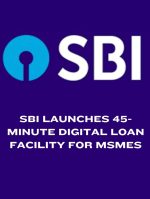By Vikas Varma
MSME Day 2024: The global optimism about India’s continued growth is backed by a solid rationale. Almost a decade ago, the country was the 10th largest economy. Today, with a GDP of over $4 trillion, it’s marching towards its goal of becoming the third-largest economy in the world by 2030. Even without delving deep into macroeconomics, one can tell that there are a few very clear factors behind the country’s upward trajectory. These include rapid digitization and innovation, continued focus and investments in infrastructure building, and a strong MSME (Micro, Small and Medium Enterprises) sector.
According to recent reports, 96% of Indian industrial units belong to small companies, which account for 40% of the country’s overall industrial production and 42% of all exports. These companies are also responsible for creating 120 million jobs, both in metros and tier two, and three cities.
While the government has done a remarkable job of protecting the MSMEs from economic downturns, health emergencies, and geopolitical conflict-led disruptions, some of the key challenges hindering the growth of these enterprises continue to persist. Let’s take the example of formal credit access, which is by far the biggest challenge for most small entrepreneurs and business owners.
The credit gap concern
Reports suggest that in India, the share of credit disbursed to the MSMEs as a percentage of GDP is fairly low when compared with other developing economies. In fact, out of the 64 million MSMEs in India, only 14% have seamless access to credit. This is despite the fact that there are 700+ State and Central government schemes designed specifically to address this problem.
At the heart of this challenge are conventional methods of credit underwriting. Even today, many financial institutions (FIs) are driven by processes that favor companies with a history of high credit scores, detailed financial statements, and tangible assets for collaterals. Hence, the perceived risk in credit underwriting for SMEs is higher compared to larger corporations, prompting FIs to adopt a conservative, if not a negative approach. This results in restricted credit access for small enterprises, which are then forced to either cut down operations or avail informal credit channels that come with very high interest rates and risk.
Data-driven solutions
The answer to this long-standing riddle lies in the use of alternate data for credit underwriting. Unlike conventional forms of collaterals, such as land records and order books, new sources of digital data can be leveraged to establish creditworthiness. By analyzing historical financial data, payment records, social media activity, risk-taking ability, financial discipline, and other relevant parameters, FIs can better evaluate the risk associated with lending to micro and small businesses. For instance, a rural entrepreneur who has just started his business through a digital platform can use the sales and delivery confirmation as proof of his financial reliability.
Similarly, data analytics can allow FIs to develop sophisticated credit scoring models that assess the creditworthiness of small enterprises in an unconventional manner. Data analytics also enables real-time decision-making by rapidly analyzing transactional data for instant credit decisions. This agility is crucial for MSMEs requiring quick access to funds. In this case, AI-driven predictive analytics can identify early warning signs of potential defaulters, optimizing borrowing costs and interest rates.
Supply chain financing (SCF) can also play an important role in bridging the financial gap for Indian MSMEs. SCF solutions aim to leverage relationships and data flows between actors in the supply chain to offer high-quality, low-risk financing. This immediately fulfils an enterprise’s demand for working capital, allowing it to invest funds in maintaining inventory levels, procuring new raw materials, or expanding business operations.
A future-ready framework
Ensuring timely and cost-effective credit to Indian MSMEs is a key prerequisite for building a ‘Viksit Bharat’ by 2047. However, that would require integrating the above-mentioned suggestions with other innovative solutions to build a comprehensive future-ready framework that brings together people, policies, and technology to power MSMEs with the capital they need to compete and succeed at a global stage.
Vikas Varma is the Chief Operating Officer, South Asia at Mastercard. Views expressed are personal. Reproducing this content without permission is prohibited.


















